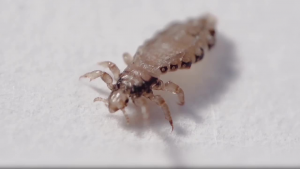Dust mites and roach poop and fungi can create protease asthma triggers in your lungs: Dust mites are microscopic, insect-like pests that generate some of the most common indoor substances—or allergens—that can trigger allergic reactions and asthma in many people. Hundreds of thousands of dust mites can live in the bedding, mattresses, upholstered furniture, carpets or curtains of your home. They feed on the dead human skin cells found in dust. (Dust mites actually carry over 20 different allergens; cysteine protease is the strongest.)
Dust mites are not parasites; they don’t bite, sting or burrow into our bodies. The harmful allergen they create comes from their fecal pellets and body fragments. Dust mites are nearly everywhere; roughly four out of five homes in the United States have detectable levels of dust mite allergen in at least one bed. Dust mites are one of the major indoor triggers for people with allergies and asthma. Dust mite exposure can even cause asthma. Chronic, ongoing exposure to dust mites at home can dramatically impact the health of people with asthma and those who are allergic or particularly sensitive to mites. These allergens cause an immune system response, known as allergic rhinitis. A dust mite allergy can range from mild to severe. A mild case may cause an occasional runny nose, watery eyes and sneezing. In severe cases, the condition is ongoing, or chronic, resulting in persistent sneezing, cough, congestion, facial pressure or severe asthma attack. People with asthma who are sensitive to mites face an increased risk of flare-ups or an asthma attack.
Asthma does not have a clear cause and may represent a cluster of diseases. It has been suggested that asthma in house dust mite sensitive patients may be caused by recurrent inhalation of live dust mites which are able to live for some time in the bronchioles of your lung. To provide themselves with a food source, the mites may purposefully excrete proteolytic enzymes, including Der p1, which increase epithelial shedding by freeing cells from the basement membrane. The mites then feed on the shed respiratory epithelial cells. Consequent loss of an intact respiratory epithelium exposes underlying tissues to dust mite protein and other allergens triggering sensitization to these proteins. Later, repeated infestation provokes an allergic response which manifests itself as asthma attacks.
The allergen named Der p1 is an active digestive enzyme that can cause cell death in delicate defense cells in the lungs, nose, eyes or on skin. It dose this by ‘melting’ the glue like substance that binds cells together. The cell’s death in turn gives Der p1 access to the body and blood stream. Der p1 has been likened to the meat tenderizers used in the food industry. The mite makes Der p1 in its gut and then places the enzyme in its dropping in order to breakdown hard-to-digest food for a later dinner. Mites consider their droppings as a future food parcel thanks to Der p1 and other enzymes found in their droppings. A mite can tell when a ‘poop’ is food because it has an exquisite sense of smell that can detect nourishment. Der p1 is a glycoprotein with sequence homology and thiol protease function similar to the enzymes papain, actinidin, bromelain and cathepsins B and H.
Dr. Kita’s Allergic Diseases lab found an asthma trigger in the fungus Alternaria. The fungus lives in moist places, such as bathrooms, but is also present among vegetables and is prevalent on Midwestern farms. For most people, the fungus is harmless, although a 1992 New England Journal of Medicine case study by Mayo Clinic researchers described the sudden death of a young adult with asthma after coming in contact with Alternaria. Dr. Kita’s research provided evidence, the direct connection: Enzymes known as proteases, which are produced by the fungus, activate the eosinophils, which produce an allergic reaction.
Published in the Journal of Immunology in 2008, the work has raised the potential for developing a drug therapy against Alternaria. “For the fungus to germinate from a hard spore, it has to digest its shell with proteases,” Dr. Kita explains. “Eosinophils also have a receptor for these proteases, called protease activated receptor. They recognize the protease and respond.” The same receptor also recognizes house dust mites and cockroach feces, which contain digestive enzymes and are major asthma triggers. The protease discovery also spawned new thinking about the significant role that infection can play in inciting inflammation. “The link between fungal infection and inflammatory signaling in a disease like asthma, which traditionally has not been thought of as an infectious disease, has been incredibly important.
If you are experiencing a large problem with Dust Mites and would like more information, check out Steve’s book on Kindle entitled “The Dust Mite Solution”.




